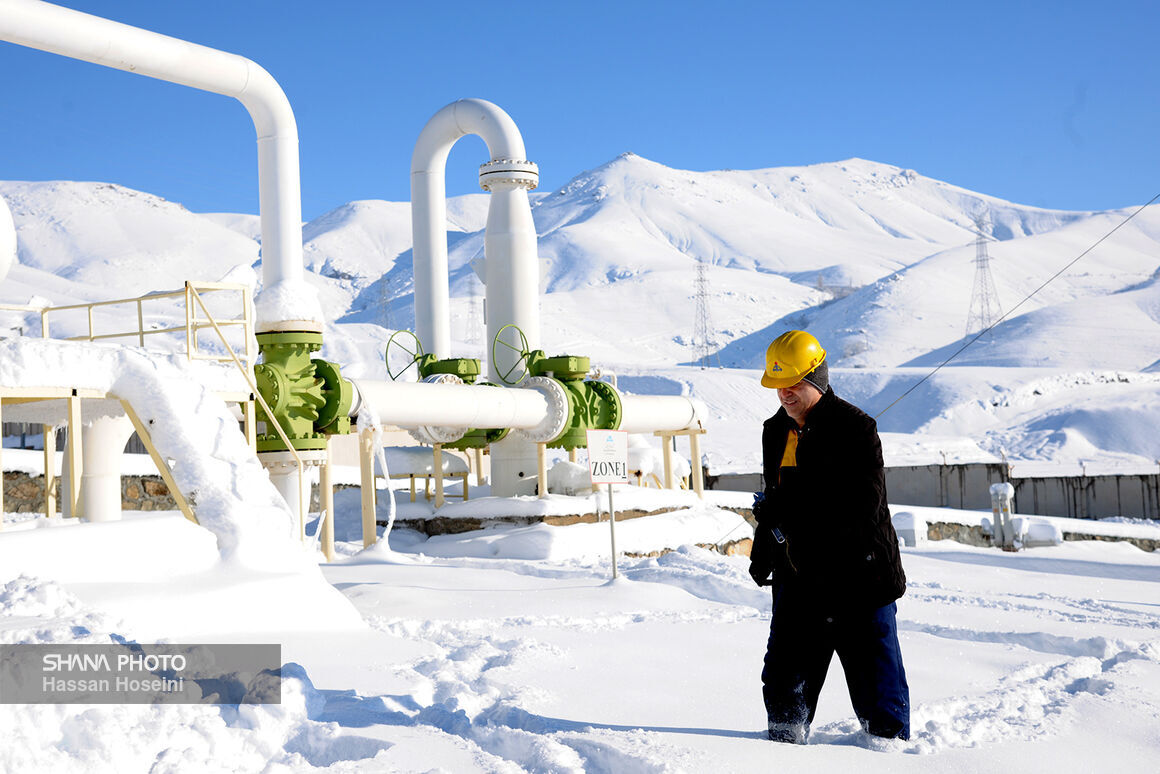Peyman Khazraei noted that last year, Iran faced serious challenges in energy consumption and management, with the production-consumption gap necessitating precise oversight and special transmission operations. "During peak cold periods, household gas consumption rose to 76% of national demand," he said.
Under normal conditions, residential and small commercial gas usage accounts for 30-34% of annual consumption, with the bulk going to industries and power plants. However, Khazraei explained that sudden temperature drops spike household demand, sometimes forcing cuts to industrial and power plant supplies. "In such cases, their fuel needs are met through liquid or hybrid fuels," he added.
Network reconfiguration, round-the-clock efforts by 50 teams
Emphasizing the company’s key role in supplying gas to northern regions, Khazraei said: "About 75% of Iran’s gas is produced in the south, while most consumption occurs in the north. Transferring such high volumes within tight timeframes amid severe cold was extremely challenging."
With roughly 70% of the National Iranian Gas Company’s physical assets—including 40,000 km of high-pressure pipelines and 350 turbo compressors—the Gas Transmission Company plays a vital intermediary role in the energy supply chain.
Khazraei noted that the unprecedented cold, which began in Azar (November-December 2024) and lasted through Farvardin (March-April 2025), pushed facilities to maximum capacity. "Some stations even activated backup units designed solely for emergencies. Seventeen booster stations faced severe strain, placing heavy pressure on staff."
To address supply gaps in high-demand areas, the company rerouted gas flow using pipeline valves. "In regions like Khorasan, where pressure was stable, we redirected gas to low-pressure zones," he said. This required deploying around 50 operational teams 24/7, sometimes in remote areas without fixed facilities. "Some colleagues had to spend nights in their vehicles," he added.
Families’ vital role in overcoming winter challenges
Looking ahead to next winter, Khazraei said maintenance programs are already underway to enhance operational readiness. Projects like the Sarajeh Qom Storage Station, the Ninth National Pipeline, and subsidiary line expansions will also bolster network stability.
He thanked gas transmission workers and their families, especially spouses, for their sacrifices. "Many colleagues spent consecutive nights away from home, stationed in remote or harsh locations. Such dedication would not be possible without family support." He also expressed gratitude to media professionals for highlighting these efforts.


Your Comment